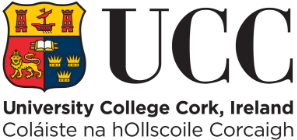The 12th biennal collective intentionality conference — july 13–25, 2020
The Social Ontology of Extractive Industries: A Critical Consideration of Bruno Latour’s Actor-Network Theory and its Applications to Social Anthropology
A Critical Consideration of Bruno Latour’s Performative Theory of Social Ontology and its Applications to Social Anthropology
Although rarely couched in the language of social ontology, questions about the nature of social entities, like corporate kinship groups, have always been central problems for social anthropology. As anthropology has widened its attention to a range of different social organisations such as governments, corporations, and legally incorporated ethnic groups, these questions have become even more pertinent to the discipline. In recent years, several ethnographies have put forward what this presentation will collectively refer to as “performative theories of social ontology”, postulating that a wide variety of social entities come into being, exist, and act through the individual performances of agents claiming to part of, or referring to, the entity in question (Golub 2014, Welker 2014). A key source of inspiration for this view is Bruno Latour’s actor-network theory (Latour 2005, Callon and Latour 1981). In this presentation, I critically examine the extent that Latour’s social ontology provides an adequate foundation for anthropological theorising about social entities. I do so by considering its application to concrete examples from my ethnographic fieldwork on customary landholding groups around a mine in Papua New Guinea. I examine the extent that Latour’s model of social ontology provides a satisfactory description of the creation, modification, and dissolution of the various entities, and facts about the, present around mining sites in Papua New Guinea.
I argue that the Latour’s picture of social entities and their properties being the product of constant work by heterogeneous assemblages of human and non-human entities falls short on two accounts. First, his account provides an overly generic means for which different social categories—ranging from corporations to classes to ethnic groups—are set up or instantiated in specific instances. In doing so, he fails to make clear distinctions between the ontological efficacy of different actions—the difference, in the case at hand, between a claimant to mining land declaring themselves to be customary landowners and a land court judge making it so. Secondly, Latour’s inclusion of objects into his ontological account insufficiently distinguishes between causally constraining objects (like speed-bumps) with ontologically determining entities (like legal statues), potentially leading to flawed understandings of the landowner associations, in the case at hand, as well as the kinds of social entities anthropologists are interested more broadly. I conclude by pointing to other approaches in social ontology that provide a more robust theoretical basis and methodological guide for anthropological investigations into social entities.


Discussion
Only ISOS members (with valid fee) can access to the discussion section. Visit ISOS website to subscribe.